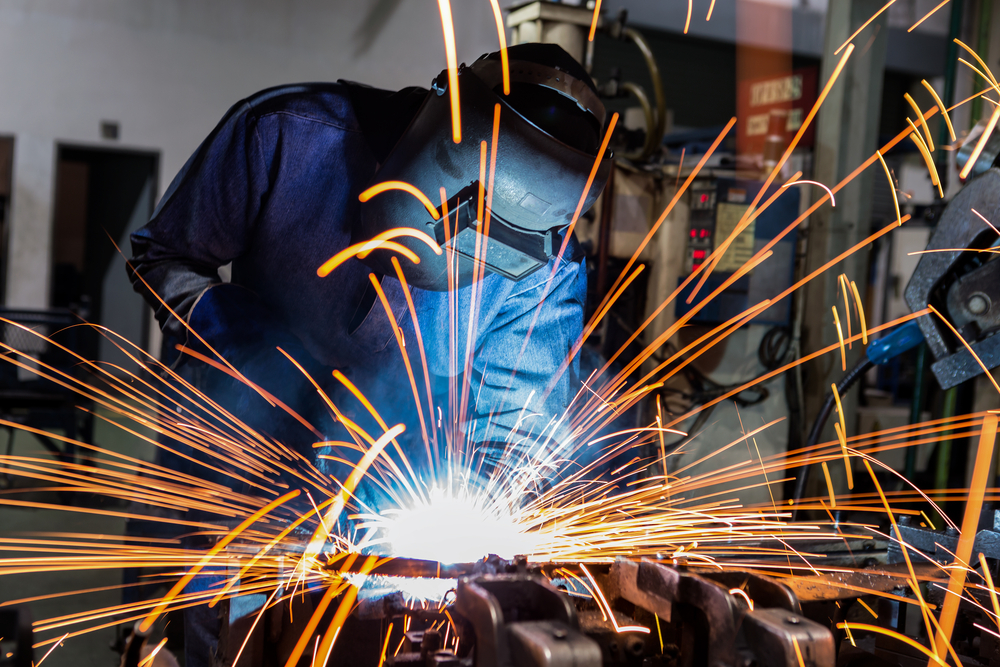Back to Basics is a weekly feature that highlights important but possibly overlooked information that any EHS professional should know. This week, we examine OSHA’s requirements for welding and cutting safety.
There are many different hazards that welders face in a number of different industries. OSHA has clear guidelines for safety during welding, cutting, and brazing to help protect workers who face potential fires, explosions, accidental contact, contamination, and breathing hazards.
For EHS leaders
OSHA requires managers to establish a specific area for cutting and welding. They also must develop procedures for welding outside that area, and designate a person who will authorize welding and cutting in other places. Before any welding or cutting begins, the area must be inspected, and the person must list the precautions that are necessary before granting permission or a written permit to proceed. Managers should make sure their welders and supervisors are properly trained on using their equipment safely and on the safest practices. They should also make all contractors aware of the flammable materials or hazardous conditions that they may not know about.
Supervisors are responsible for safe equipment handling and the safe use of the cutting or welding process, OSHA states. They must determine the potential combustible materials and hazardous areas in the workspace, and stop combustibles from exploding by moving the work to a different location, or having the combustibles moved to a safe distance away and shielded from ignition. Combustibles may include paper clippings, wood shavings, or textile fibers, and they must be swept away from the welding area so there is a clean floor for at least a 35-foot radius. Combustible floors must be kept wet and covered by damp sand, or protected by fire-resistant shields.
Supervisors need to make sure that welding and cutting activities are planned to avoid plant operations involving combustibles happening at the same time. Lastly, they need to determine if fire protection and extinguishing equipment are present at the work site, and to provide fire watchers when they are required.
Fire protection
Welding and cutting should be allowed only in areas that have been made fire safe. If the work cannot be moved, combustible materials must be removed or protected from ignition sources. In that case, OSHA says that guards should be used to confine the heat, sparks, and slag, and to protect the fire hazards that cannot be moved.
Additionally, if there are floor openings or cracks that cannot be closed or sealed off, precautions must be taken so that no combustible materials could fall through the floor if ignited. Fire extinguishers must be maintained and on standby for immediate use. Other fire extinguishing equipment can include buckets of sand, pails of water, or a hose.
Fire watchers are required whenever welding or cutting is being done in a location where more serious fires may occur, and they must be equipped with fire extinguishing equipment that they are trained to use. They need to watch for fires in exposed areas, try to extinguish them when they’re equipment is sufficient, and sound the alarm when the fire becomes too dangerous for them to handle. Fire watches should continue for at least 30 minutes after the welding is completed to make sure there are no smoldering fires.
Ventilation
Employees who weld are likely to experience contamination, based on the dimensions of their workspace, the number of welders working there, and the hazardous fumes, gases, or dust that might be caused by the metals they are working with. When working in a screened area, the screens should be arranged so that no serious restriction of ventilation occurs. Employers should mount screens about 2 feet off the floor unless the work being performed is at a level that requires the screen being moved towards the ground.
Companies should supply local exhaust or general ventilating systems in order to keep the level of toxic fumes, gases, or dusts below the maximum allowable concentration. All welding and cutting done in confined spaces must be ventilated to prevent the buildup of toxic materials which could lead to a lack of oxygen. OSHA recommends using airline respirators or self-contained units that are approved by and meet the National Institute of Occupational Safety and Health’s (NIOSH) standards.
Personnel protection
Employers must make sure that welders working on platforms, scaffolds, or runways have the proper fall protection, such as railings, safety belts, life lines, or other equally effective safeguards, says OSHA. Employees must also have the appropriate protective clothing to wear while welding.
Eye protection must be provided to all welders and assistants in the form of goggles or other suitable equipment, and helmets or hand shields must be used during all forms of welding or cutting. Goggles mush be ventilated to prevent lens fog, and lens glass should be tempered so that it is free from striae, air bubbles, waves, or other flaws. The lenses should also be marked permanently so employees can easily distinguish between shades.
Helmets and hand shields must be made of a material that is an insulator for heat and electricity, and all eye protection equipment must not be flammable and should be able to withstand sterilization. Helmets and hand shields should protect the face, neck, and ears from direct radiant energy, and helmets should be fitted with cover and filter plates that are easily removable.
Click here for the full OSHA requirements for welding and cutting safety.

